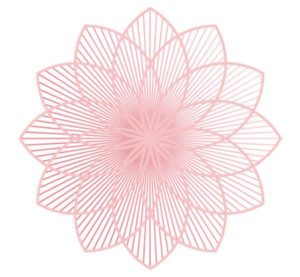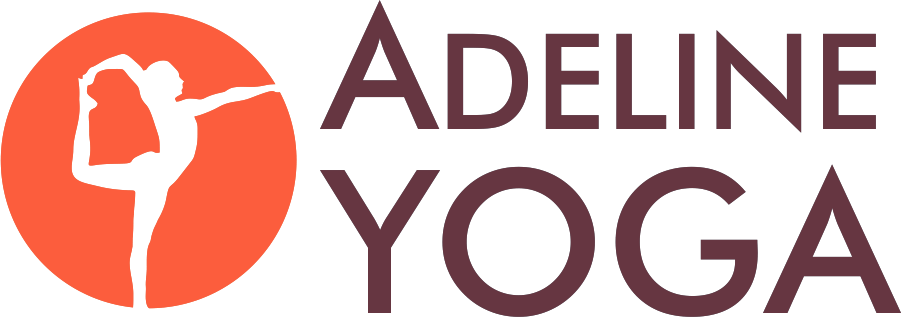
In her book The Gift of Consciousness: Patanjali’s Yoga Sutras, Gitte Bechsgaard draws on her decades of experience as a yoga practitioner, teacher, and Vedic scholar to bring her readers a rich, accessible interpretation of the yoga sutras.
She founded the Vidya Institute in Toronto with Gillian McCann in 2002 with the guidance of her teacher, Krishnan Mantri. In addition to teaching asana, the Vidya Institute commits to teaching practical yoga philosophy that students can employ in their day-to-day lives.
Along with her Iyengar certification and years of extensive study of Sanskrit and the Scriptures, Gitte is also a Western psychotherapist. Both of these distinctive traditions have shaped her unique understanding of human consciousness.
Adeline Yoga Studio owner Heather Haxo Phillips sat down with Gitte to learn more about her personal journey.
What brought you to Iyengar yoga?
It was actually my husband. He had already been to India and done some yoga there when we met. And when we moved to Copenhagen, we decided we wanted to take a yoga class together, and we just happened to end up in an Iyengar yoga class the first time. I remember my teacher went up to me after class and said, “From now on, you’re going to be here every day. And you’ll do this for the rest of your life.”
Your first class?
She said she’s never said this to anyone before or after. For seven years, my husband and I did yoga at the Iyengar Institute in Copenhagen. I developed a particularly strong relationship with our teacher.
I was interested in health and alternative healing, but it was a little bit of a coincidence that I ended up studying Iyengar yoga. It wasn’t like I thought, oh I’m going to seek out a guru; I didn’t even know what approach to yoga it was.
Coincidence… or fate?
At that time I definitely thought it was a coincidence. Today, I do think it was fate.

What are the intersections between your role as a yoga teacher or scholar of Vedic studies and a psychotherapist?
You know, it took me many years to figure that out myself. I studied Western psychology and psychotherapy on one side, and then on the other I studied yoga and got deeply involved in Eastern psychology. I think it took me twenty years, honestly, to find answers for the ways in which they bridge, the ways in which you can combine them, and the ways in which you absolutely cannot because they are very different approaches to the mind and consciousness.
When I was younger, I would say I was maybe naïve in thinking that you could mix them. I had to study them deeply and separately to find out how much knowledge of both paradigms you need to be able to navigate them together.
So I distinguish. I have certain clients I see as a psychotherapist that need a Western approach, and I do not work most of the time on yoga with them, and I have others who I work with using yoga and mantras as a method of counseling. However, I do approach the systems quite differently.
Eastern and Western.
Yes. Sometimes Western students come to Eastern systems, but their psyches actually are not quite ready for that approach. My training in Western psychology has helped me understand ways that we have to be careful. How do we work with the ego, how do we work with the nervous system, how do we work the manomaya kosha so that they are solid, but not too much, not too little? It’s been a long journey for me to find the answers. And the Gift of Consciousness was actually part of that journey for me. I felt like I needed to go deep into the scriptures to understand how they saw the mind, so that I could find answers for myself and for my students to work with. I feel that there’s something extraordinarily valuable in the eastern perspective on the mind and consciousness, because it includes the body, lifestyle, a spiritual perspective, and a philosophical perspective. For people to actually grow and heal, it is necessary that we approach them as whole human beings, and that they must also engage themselves in the practice to make themselves better.

Tell us more about why you decided to write your book.
I wrote the book because my PhD thesis was on Patanjali’s Yoga Sutras and Samadhi Pada. I was very fortunate to have Krishnan Mantri guiding my studies of Sanskrit every day for many years. And when my thesis was done, some of my teachers encouraged me to write a book. First I thought, no way! There’s no way I can do that. My thesis was very scholarly and for people who are very interested in Sanskrit and these old texts. At that time, I had been teaching the yoga sutras to students in Toronto and Copenhagen and their questions, their engagement with the material, had informed me of many areas that I felt I needed to address in a different way. I came to the conclusion that if I was going to write a book, I had to write chapters that were in more ordinary, understandable language.
I think when I learned philosophy from Mantri-ji together with what I’d learned from Iyengar yoga, I was so struck by both of them being so practical, and made it so alive. You’re never bored. You always feel, wow, this is just what I need right now. And I wanted to convey that. I wanted to convey that philosophy is not just something that is meant to make you feel stupid, or wasn’t relevant to what we do every day. My hope was to rather convey a little bit that could be useful. I’m very practical. Not practical-worldly, but I’m practical with yoga and lifestyle, and philosophies of life. I feel if we don’t live it, if we can’t apply it, then it doesn’t speak to me as much.
Let’s talk about how your asana and pranayama practice has changed since you wrote the book.
That’s a good question. First of all, I do not feel that I have a very good pranayama practice. It’s not an easy practice for me. I’ve probably taken more to chanting. Mantras have been my way in, and I think I have developed good pranayama through that. I’ve always loved asanas. I couldn’t live without them. When I was younger, I was more interested in what I could do, and I think today, I’m more interested in the many ways that a simpler asana practice enriches my life. It has to give energy, calmness. It has to be nourishing for me so that I can be there for others. And I’m amazed at the deepening. There’s a simplicity, a deep appreciation, but less—maybe less result-oriented. And I think it is because of the injury I had and the help that I received from very amazing Iyengar teachers. I never thought I could have come this far. I have a deep appreciation of asana, though I can’t do as much as I used to.
And do you want to say anything about what happened?
I had a severe injury with spinal paralysis. And it took a long time to work with that.

What do you believe Samadhi is? Can you describe what it feels like to have an awakened buddhi?
You know it’s interesting, because the hardest part of writing the book was the last two chapters, which are about the Samadhi states and about sutra 141-151. Mantri-ji had to teach them to me again and again and again, because those terms are so technical, and I think there’s a tendency for us as practitioners to skip over them, or fear that this is beyond our grasp. I actually do not think that it’s as abstract or strange today. I now think of Samadhi as a profound state of concentration leading to meditation and absorption. And what’s beautiful about it is that it’s a way of anchoring deep within yourself.
In Sanskrit we have the word “svastha,” which means to be sitting in ourselves, to be resting in ourselves, and I think if there’s one gift that yoga has kept giving me in hard times and easy times is the effort to try and be more established within myself and not be taken out all the time. It becomes like a sanctuary, a resource you can draw on in difficult times. And whatever that practice is, it doesn’t matter. Whether it is our asana practice, or mantra practice, or pranayama, it is about coming into a deeper place of anchoring in a place that isn’t always fluctuating and trying to live from there. And that’s easier said than done.
What is one thing that you can recommend to the students at Adeline Yoga to help them become more awake to their highest potential? What one thing can they get started with?
I think that the way Iyengar yoga is taught brings that awakening slowly but steadily. To just work slowly, steadily, no rush, but with commitment. Commitment is a big part. To do it regularly. Personally, I find that the chanting of the invocation to Patanjali and the sutras are important invocations really help in the process. But that’s probably just because I have always loved sacred sound. From when I was a child, I’ve always taken to the joy of sound, singing, and chanting. Opens the heart up from within. I think it helps tremendously to work with both the body in asana, with the breath in pranayama, and with sacred sound in mantras, or sutras, or invocations. Being grounded in how we practice it is the best way to awaken. And a commitment to what we do.

You can join Gitte for Module 1 at Yoga Circle in Chicago this September 2019. Or register for Module 2 in Portland Oregon this September 2019. For both these modules, Gitte will be partnering with Senior teacher Gloria Goldberg, a pillar in the international Iyengar yoga community.
